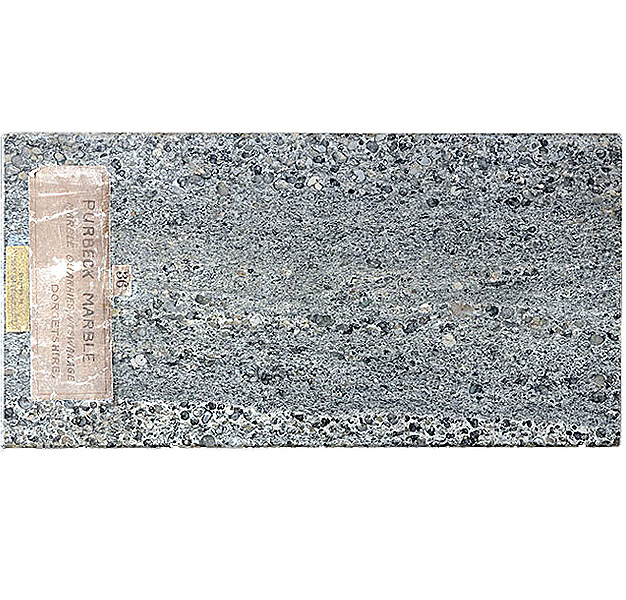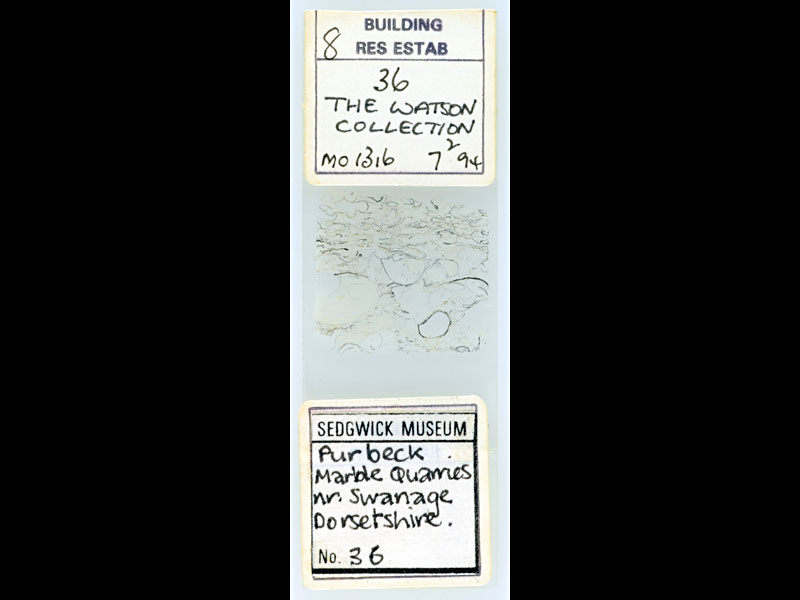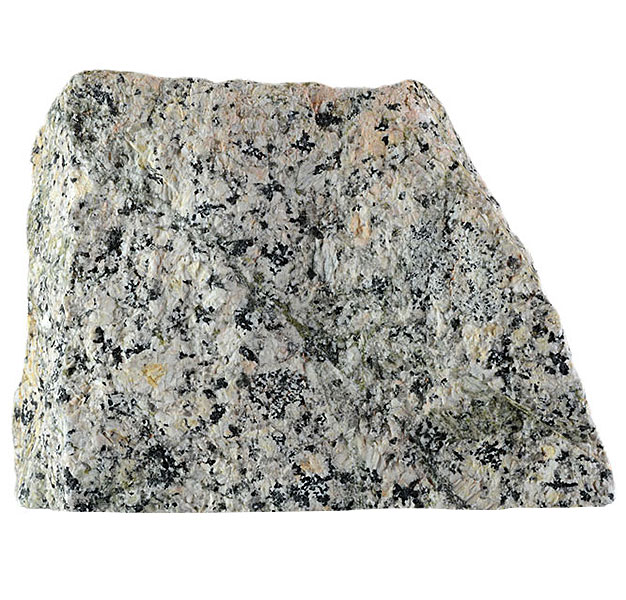
Fact sheet
This sample of building stone is Jurassic limestone from the Purbeck marble quarries near Swanage, Dorset. The building industry calls this type of rock marble and used it as a decorative stone in the construction of churches and cathedrals in southern England. In geology marble implies heating and high pressure but, although it does resemble true marble, this rock has not been metamorphosed.
In thin section the rock is composed of many whole and fragmented gastropod (Viviparus) shells. The shells form a rough alignment, which paralleled the original sea floor surface, and are supported in a fine-grained, calcite-rich mud matrix known as micrite. Some of the larger shells remained whole and were not completely filled by the mud, and in these cases the mud filled only the lower part of the shell, allowing geologists to identify which way was up in the rock. The spaces were later filled by large, clear calcite crystals, known as sparry calcite, which formed from later penetrating fluid.
The United Kingdom Virtual Microscope (UKVM) collection consists of igneous, sedimentary and metamorphic rocks from around the UK.
It is intended as a teaching resource, helping to tell the story of the common rock types and how they form, and reflecting the history of the UK at the margins of the continent of Europe. The collection is a series of teaching sets, for example igneous rocks from the North Atlantic Igneous Province and SW England; high-temperature metamorphic rocks from Scotland and low-temperature metamorphic rocks from Wales; and sedimentary rocks, including English limestones and sandstones.










